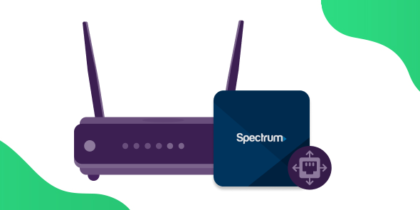The COTX Miner is a full-featured indoor hotspot that works with the Helium Network COTX. It is small, yet has delivered high performance, thanks to the Raspberry Pi4 technology that it is based on.
Moreover, it also features a display panel with various connections to indicate various operational states quickly. The best feature of the COTX Miner is that it is incredibly compact yet performs quite well. COTX Miner is extensible and practical with a wide range of connectivity choices, including WiFi and Ethernet.
Port Forwarding using COTX Miner
Whenever a router receives a request from a device over the network, it accepts that device and uses the internet to obtain the required data.
Ports are utilized for giving a name to every device or PC on the network. A port is required for all kinds of network connections. The router matches an incoming request with its associated port numbers, allowing data to be sent to the appropriate internal computer. The incoming connection may be forwarded to the specified device and program on a private network using Port Forwarding.
All devices linked to a WiFi router, or VPN, can form a private network.
You’ll have to set ports on the network for forwarding ports before running the Miner:
- 44158/TCP: This port is used by the Miner for communicating with other Miners. The networking logic would work past the absence of forwarding here, yet the performance will be better if the port is forwarded.
- 1680/UDP: This is the port for radio communication with the Miner. Without this, data packets cannot be forwarded.
If you’re forwarding a radio packet on the same machine as the Miner (such as on a Raspberry Pi), Port Forwarding on the second port would be less essential.
However, in case you’re operating the Miner on the cloud, it is the main requirement.
Port Forward through a VPN
A VPN could be helpful in a variety of situations. It can boost torrent speed and provide remote access to the user’s computers while away from home.
There are both static and dynamic Port Forwarding methods. Dynamic ports get a new number every time a connection is established; however, static ports always have the same number.
The primary obstacle is that the Port Forwarding requires a static IP address, which you might not have on your device. For this, you’d have to initially have a static IP address since the IP address is constantly changing.
Moreover, you might also be unable to update the settings or perform Port Forwarding of the relevant ports. In such cases, VPNs allow the use of a static IP address and a Port Forwarding add-on to prevent complications with opening ports on a COTX miner.
Why use a VPN while opening ports?
VPN servers employ Port Forwarding to ensure that clients do not openly connect with the internet, similar to how a router acts as an interface between the internet and computer while preventing the computer from directly contacting the internet.
Any incoming connection is rerouted through the VPN’s Port Forwarding service, bypassing the NAT firewall and increasing connection speeds. In other words, if the VPN lacks a built-in NAT firewall, Port Forwarding isn’t necessary because inbound connections would not be prevented.
Furthermore, the encrypted tunnel created by a VPN must bypass all NAT firewalls on the network, so the users don’t have to make further adjustments to the setting of their router.
Port Forwarding needs the VPN to enable port forwarding as a feature in case the NAT firewall is present. Port forwarding isn’t available with all VPNs; however, in case it is, users can typically set it up from their VPN application or the website. It must be considered that port forwarding may be available only on specific servers.
The actual procedure is different for each VPN service, yet a broad overview of how VPNs can be used for port forwarding is as follows:
- Enable “Port Forwarding” in the VPN app/website.
- Select the ports you wish to open.
- Changing the listening port uses port forwarding (e.g., torrent client) to the number set in the last step.
- Disable NAT-PMP and UPnP in settings.



